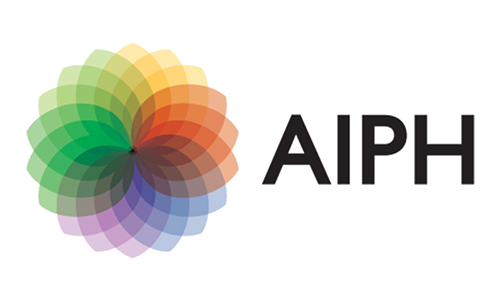Internship Tasks:
The interns will be responsible for different projects according to their ability and the organization’s need. Including but not limited to:
Project 1: Review and critical analysis of urban greening policies around the world.
Cities are increasing in size and density, and this places pressure on provision of green space., despite the evidence that urban greening is essential for liveable and resilient cities. Policy that requires a defined quality and quantity of urban green plays a substantial role in planning and implementation of urban greening initiatives. This project determines the level of urban greening policy around the world, and
Benchmarking exercise: Create a list of urban greening policies in different countries, regions and cities. Include a list of contact details for the person who is responsible for answering any questions about the policy. Use the web-based translation function for policies in languages other than English. (AIPH members in the different regions will be asked to assist with a final translation to ensure that the content is correctly interpreted.)
● Describe the features of each policy
● Identify similar features
● Identify individual strengths
● Are the policies regulatory or recommended actions?
Investigate where this fits into planning policy – national, regional, municipal, local government – and at what stage of the design process this is addressed, who makes the decision about whether the policy requirements are fulfilled. After the project has been implemented, what is the process for checking that it continues to deliver the policy requirements. Is there a period of review? Who is responsible for the ongoing capacity of the project to deliver on urban greening benefits?
Does the policy refer to high level recommendations, such as the United Nations Sustainable Development Goals, or the European Green Deal, or others?
Examples:
Greater London Authority Urban Greening Factor
Wales Sustainable urban drainage policy
New York Green Roof policy
Use case studies to illustrate the implementation of 3 or 4 of these. (AIPH can help with introductions to people who have been involved in projects to help the intern get information that goes beyond the info that is readily available in the public domain)
Conclusions: State the common strengths of the urban greening policies that you have found, and give your opinion on how transferable these are across culture and climate. Would it be possible to develop a global framework for an urban greening policy? If not, what knowledge is missing and how would this become available? Is there evidence of the benefits of urban greening policies in solving city challenges and creating sustainable and liveable cities?
Project 2: Feasibility study of the development of a set of International Living Green City standards to facilitate an Urban Landscape certification scheme.
City policies are increasingly including nature-based solutions as recommended or required features in new developments and re-development of urban spaces and buildings. Some cities define measurable targets that must be achieved, some only recommend that NBS are considered. One of the major challenges that limits inclusion of nature and living green into urban infrastructure is that policy is not sufficiently definite about what is required, tending to encourage the inclusion of nature rather than demand it.
Green building rating tools – also known as certification – are used to assess and recognise buildings which meet certain green requirements or standards, and policies may require achievement of a certain level of certification. A similar system does not yet exist for urban landscapes, and AIPH believes that establishing this would be of global benefit.
Proposed approach.
This project covers the background work needed to identify what features would be suitable for a ‘Living Green’ certification scheme, and what fee structure might be appropriate. AIPH promotes the power of plants. Our Green City programme aims to increase the quality and quantity of ‘living green’ in urban areas by promoting the benefits of this, and facilitating activities that encourage cities, planners, designers, and develops to increase urban greening. AIPH uses the term ‘living green’ to mean plants and nature, and distinguish ‘living green’ actions from ‘sustainable green’ actions (such as recycling, green energy, reducing waste). The establishment of a set of international standards would greatly facilitate prescriptive policy above suggestive policy with regard to nature-based solutions/urban greening/green infrastructure. Professional standards create confidence in adoption of technical measures, and the importance of implementing a robust quality assurance system is well understood in infrastructure development.
This project involves a review of sustainability, horticultural, and agricultural standards that are currently in place globally and nationally. This review will inform the complexity and the process that would be suitable for the development of a new International Living Green Standard and certification scheme.
For example: LEED (Leadership in Energy and Environmental Design) is the most widely used green building rating system in the world. Available for virtually all building types, LEED provides a framework for healthy, highly efficient, and cost-saving green buildings. LEED certification is a globally recognized symbol of sustainability achievement and leadership. LEED is for all building types and all building phases including new construction, interior fit outs, operations and maintenance and core and shell.
The first part of this project is to develop a list of current certification systems and their fee structures. Examples to consider are LEED, DGNB, Estidama, WELL, ISO, BREEAM, CEEQUAL, Global GAP, MPS – any others that can be found. Use online translation features to do a preliminary translation. (AIPH members will be available to help with accurate translation to ensure correct interpretation).
● What metrics do the standards use to assess the project?
● Are there common figures for the standards?
● Have the systems developed their own metrics?
● What is the process to achieve certification?
● Is the standard internally or externally audited?
● What fees are payable to achieve certification? How long does certification last? Is there a fee for renewal of certification?
● What are the common features?
● Are they local or global? How easy is it to interpret global themes to local context?
● Provide numbers of certified projects/ businesses for each certification scheme.
● What specific features do any of these schemes have that makes them stand out (in your opinion)?
Create 3 or 4 case studies that illustrate the benefit of certification to a company or organisation that has achieved certification. Use these case studies to critically analyse the potential benefits of a ‘Living Green’ certification scheme.
Conclusion: How relevant are the features in Green Building certification for interpretation into urban landscape projects, and how would certain features be incorporated into the International Living Green Standards. What fee structure seems the most adaptable and appropriate? Outline the process for developing a new certification scheme for International Living Green Standards.
Requirements:
● Be interested in Urban Greening, have the creative analysis ability of global information.
● Bachelor’s degree (completed/ongoing)
● Fluency in spoken and written English
● Strong interpersonal and English communicative skills
● Proficiency in MS software (e.g. Word, Excel, Powerpoint)






